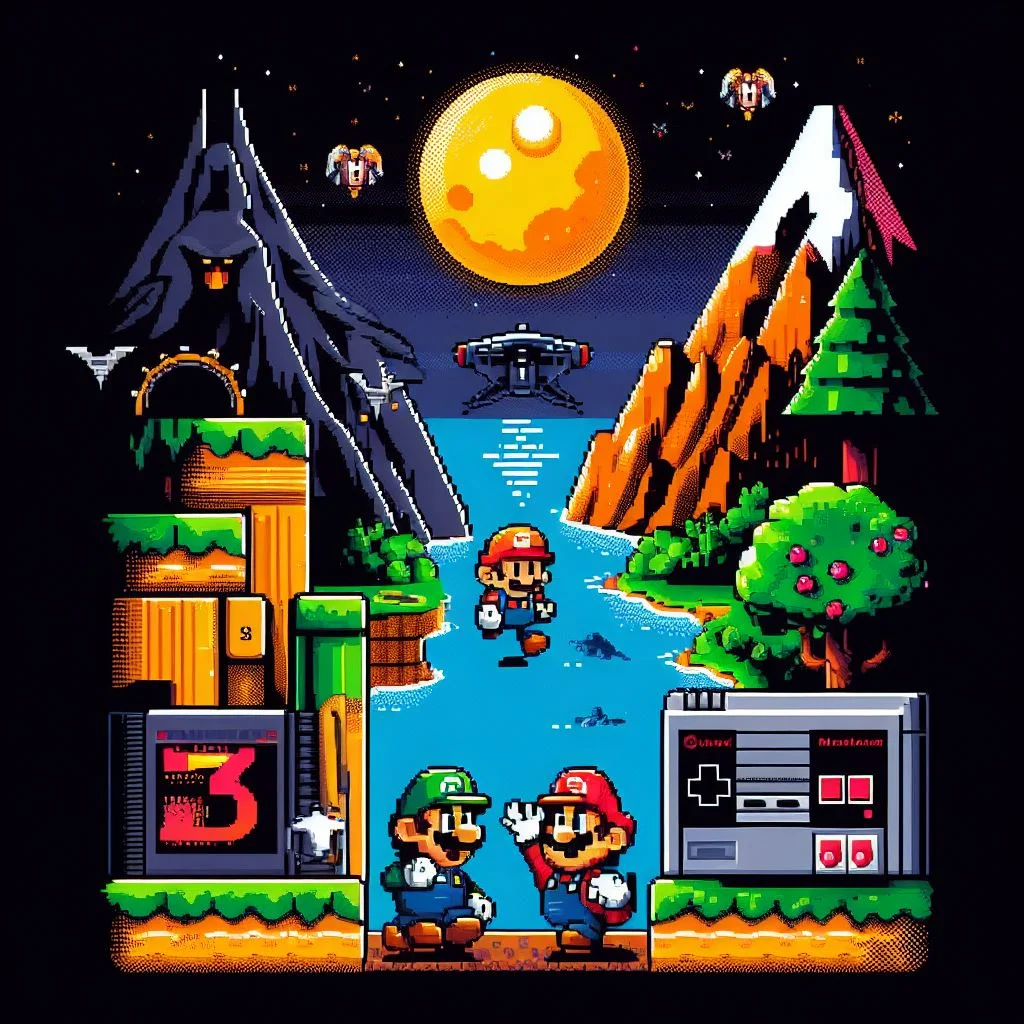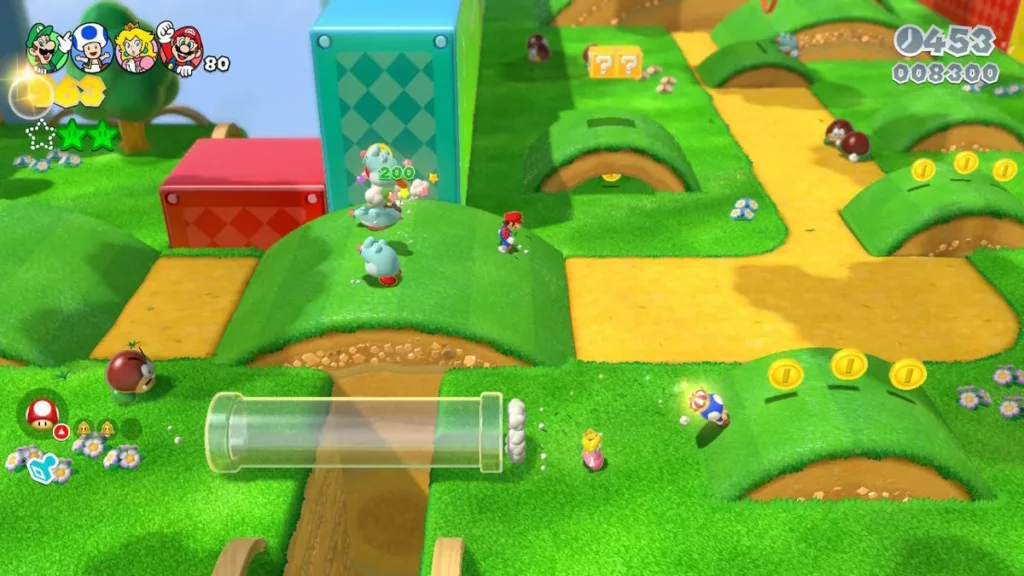The story of Super Mario Bros. 3 really begins with the massive success of the original Super Mario Bros. on the NES in 1985. The classic sidescrolling platformer was one of the major launch titles for the new Nintendo system and went on to sell over 40 million copies worldwide. It established Mario as Nintendo’s mascot and remains one of the most iconic and influential video games of all time.
Super Mario Bros. featured Mario or Luigi traversing right-scrolling stages by running and jumping on platforms, breaking bricks, and defeating enemies like Koopa Troopas and Goombas by jumping on them. The intuitive physics, smooth scrolling, and precision jump mechanics made controlling Mario feel natural. The game also introduced the basic premise of Bowser kidnapping Princess Peach, with Mario having to traverse various worlds and castles to rescue her.

The following year in 1986, Nintendo released Super Mario Bros. 2 in Japan. However, the game was deemed too difficult and similar to the first SMB for North American audiences. So Nintendo took a game called Doki Doki Panic, replaced the characters with Mario characters, and released it as Super Mario Bros. 2 in the US and Europe. This explains the different gameplay and mechanics focused on throwing objects and digging in SMB2 compared to other Mario games.
After the mixed reception of SMB2 in the West, Nintendo wanted to release a true sequel to the original Super Mario Bros. for NES. This set the stage for the development of the bigger, bolder, and more innovative Super Mario Bros. 3 that would take the gaming world by storm.
The History of Mario Leading up to Super Mario Bros. 3
The story of Super Mario Bros. 3 really begins with the massive success of the original Super Mario Bros. on the NES in 1985. Some key points:
- The original Super Mario Bros. on NES was a major launch title in 1985.
- It went on to sell over 40 million copies worldwide.
- Established Mario as Nintendo’s mascot
- Its intuitive physics and precision jumping made it very influential.
The following year in 1986:
- Super Mario Bros. 2 was released in Japan.
- It was deemed too difficult for Western audiences.
- Nintendo took Doki Doki Panic and reskinned it into SMB2 for the US/Europe.
- This explains the different gameplay of SMB2 with throwing objects, etc.
After the mixed reception of SMB2 in the West:
Nintendo wanted to release a true sequel to the original SMB.
This set the stage for the development of Super Mario Bros. 3
Super Mario Bros. 3
After the mixed reception of Super Mario Bros. 2 in North America and Europe, Nintendo wanted to develop a proper sequel to the original Super Mario Bros. that would wow players. Work on Super Mario Bros. 3 began in 1987 with a team led by Shigeru Miyamoto, the creator of Mario and several other Nintendo icons.
The development team for SMB3 consisted of:
- Shigeru Miyamoto– Director
- Takashi Tezuka – Assistant Director
- Koji Kondo – Music Composer
- Toshihiko Nakago – Software Engineer
Many new elements were introduced during development to expand upon the original SMB formula:
- The overworld map screen that lets players choose levels
- New power-ups like the Super Leaf and Frog Suit
- Vertical-scrolling airship levels
- Minigames and Hammer Brother battles on the map
- Diverse themes like deserts, water levels, and sky worlds
Extensive testing and refinement were done to make the gameplay feel polished. The hard work paid off when SMB3 launched in Japan on October 23, 1988, and became a smash hit. The North American launch followed in February 1990 and also saw massive sales. Some key facts about the launch and reception:
- Sold over 1 million copies in first week in North America
- Highest-selling standalone game ever for NES at 18 million copies
- Received numerous Game of the Year awards from critics
- Considered an instant classic and one of the greatest games ever
Gameplay and Design
Super Mario Bros. 3 built upon the core gameplay of the original Super Mario Bros. but vastly expanded it in nearly every way. At its heart, it remained a 2D sidescrolling platformer but the level design, controls, mechanics, and overall scope were far more advanced.

Some key elements of the gameplay and design:
Tight controls and physics – Controlling Mario feels natural and intuitive. Jumping, running, and momentum feel smooth.
Iconic level themes – Grasslands, deserts, skies, oceans, ice worlds, and more. Each with unique obstacles.
Power-ups – New items like the Super Leaf, Frog Suit, Hammer Suit, and more added abilities.
Overworld map – This lets players choose their path and provides variety. Has mini-games too.
Secrets and exploration – Hidden blocks, white mushroom houses, pipes, and branching paths reward exploration.
Alternate paths – Levels have multiple routes and exits adding replayability.
Enemies – New and old foes like Koopa Troopas, Piranha Plants, Hammer Bros, and more.
Visuals – Vibrant, detailed sprites and backgrounds that pushed NES to its limits.
Music – Upbeat memorable tunes for each level and world. Perfectly matches the gameplay.
The game rewards you for learning skills, uncovering secrets, and finding new approaches through the levels. The expanded mechanics, exploration, and variety took the Mario formula to new heights and set the standard for the genre.
New Features Introduced in SMB3
While Super Mario Bros. 3 retained the classic Mario gameplay, it revolutionized the series with a number of new features that became staples for future games. These new elements expanded the scope and replayability enormously compared to prior titles.

Overworld Map
- A non-linear map lets players choose their path through levels and worlds.
- Adds exploration, secrets, and branching paths.
- Themed after Super Mario Bros. level themes like grasslands and deserts.
Power-Ups
- Items like the Super Leaf, Frog Suit, and Hammer Suit grant Mario new abilities.
- Super Leaf gives Mario a raccoon tail and ears allowing him to fly.
- Frog Suit increases underwater agility and swimming speed.
Mini-Games
- Players can partake in mini-game events on the Overworld map.
- Cloud levels that award power-ups and lives.
- “Wrecking Crew” style levels destroying walls.
- Memory matching games.
New Enemies
- Foes like Boom Boom, Angry Sun, Koopalings, and more debut.
- Provide fun new challenges and variety.
Inventory System
- Players can store and select power-ups in an inventory to use later.
- Added strategy around when to use items.
Why Super Mario Bros. 3 Was Revolutionary
When it launched in 1988/1990, Super Mario Bros. 3 was rightfully seen as a giant leap forward for video games. The sequel took the classic Mario formula to new heights and set the standard for the platforming genre. Here are some of the key reasons SMB3 was revolutionary:
Level Design – More varied, expansive, and creative than prior games. New themes and hazards kept the gameplay exciting.
Scope – With over 90 levels across 8 worlds plus mini-games, SMB3 was massive for the time.
Visuals – Vibrant graphics with advanced techniques like parallax scrolling pushed NES to its limits.
Audio– Catchy new music for each level and theme. Built atmosphere.
Power-ups – New items like the Super Leaf radically changed gameplay and exploration.
Secrets – Encouraged replayability through hidden blocks, alternate paths, etc.
Overworld Map – Provided non-linear level progression and added strategy.
Polish – Nintendo’s craftsmanship produced one of the most responsive, bug-free platformers ever.
Accessibility – Easy to pick up but retained challenge. Clear tutorial levels.
SMB3 proved Nintendo’s prowess at taking a great core concept and executing it flawlessly. The game realized Mario’s full potential and laid the groundwork for future installments and other platforming series.
Legacy and Impact on the Gaming Industry
Super Mario Bros. 3 was an instant classic that had an immense impact on platformers and video games as a whole. The game set new standards that informed the design principles of countless future titles.
Inspired by beloved sequels like Super Mario World and New Super Mario Bros. – They iterated on SMB3’s mechanics and level design.
Core gameplay became a template for 2D platformers – Games like Sonic the Hedgehog and Donkey Kong Country followed its lead.
Proved potential of sequels – SMB3 showed how to take a formula and expand it in inventive ways vs just rehashing.
Helped popularize concepts like overworld maps, alternate paths, and secrets – These are now common in platformers and other genres.
Cemented Mario as Nintendo’s flagship franchise – Mario became synonymous with Nintendo and quality game design.
Drove adoption of the NES – SMB3 was many gamers’ first experience with console gaming.
Influenced game design philosophy – Rewarding exploration and curiosity over just linearity.
Decades later, SMB3 remains one of the highest-rated and most fondly remembered games ever. It represents the pinnacle of classic 2D platforming and a testament to timeless game design.
Conclusion
When Super Mario Bros. 3 launched in the late 80s, the video game world was never the same again. Nintendo had taken the classic Mario formula to absolute new heights. They packed the sequel with more enemy characters, abilities, secrets, and variety than players could have imagined.
Yet for all its innovation, the game’s magic stems from its mastery of the craft. The controls remain a model of precision and responsiveness that other platformers strive to match. The cheerful, catchy music captures Mario’s charm. The polished design still impresses today.
Over 30 years later, we revere Super Mario Bros. 3 as a pillar of game design. It represents the unlimited potential of interactive entertainment. When talented creators take a simple, accessible concept like running and jumping, and inject it with endless creativity, the possibilities are boundless. Modern developers still draw inspiration from their imagination and refinement.
For many gamers, Super Mario Bros. 3 was a cherished part of childhood. It swept us away to a world of wonder, surpassing expectations of what a game could be. And even today, revisiting it through Nintendo Switch Online feels like coming home. In those iconic opening notes, Mario takes our hand once again, inviting us into another adventure.

